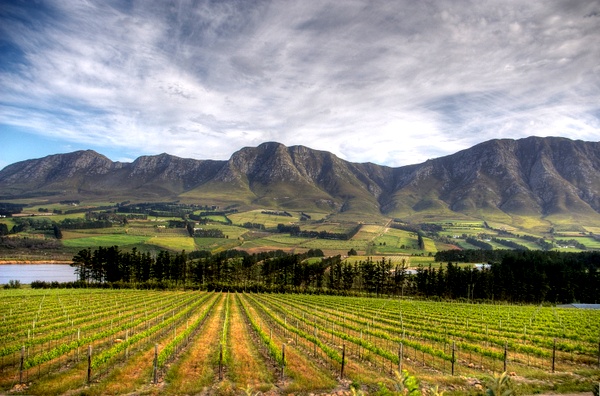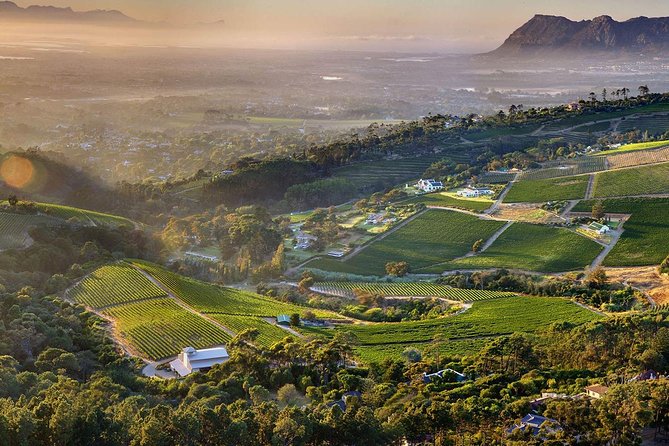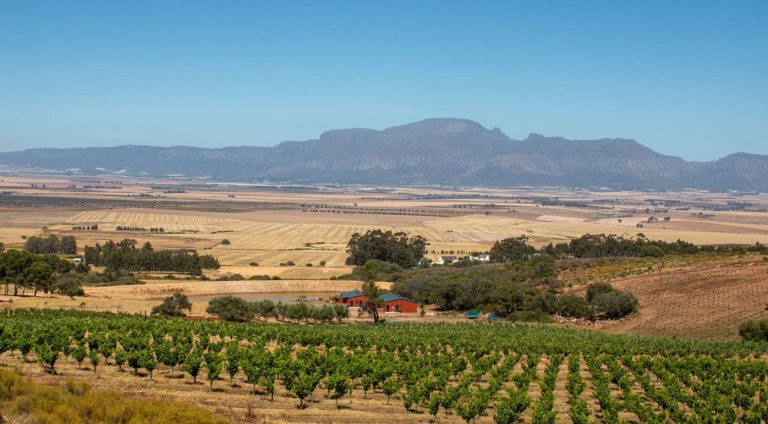South Africa stands proudly among the world’s elite wine destinations, where dramatic landscapes, Mediterranean-like climates, and passionate craftsmanship combine to produce wines of exceptional quality. In 2025, the country’s reputation continues to soar, attracting global attention for its balance of heritage and modern winemaking innovation. From the sun-drenched valleys of Stellenbosch to the tranquil slopes of Constantia and the lush vineyards of Franschhoek, each region offers a distinct expression of terroir and artistry that defines the South African wine identity.
Wine lovers from across the world are turning their attention to the Cape Winelands, where elegant Chenin Blanc, bold Pinotage, and refined Cabernet Sauvignon showcase the country’s remarkable diversity. Sustainability and organic farming have further shaped the country’s winemaking philosophy, giving its bottles a modern global appeal.
This list of the Top 10 Best Wine Regions in South Africa (2025) celebrates where tradition meets innovation, guiding travelers and connoisseurs through the most captivating destinations for unforgettable wine experiences.
The Top 10 Best Wine Regions In South Africa (2025)
10. Cederberg

Cederberg has some of the highest and most remote vineyards in the country, hidden deep in rocky sandstone peaks. The thin air and granite-rich soils of the mountains make wines that are very pure and strong. Producers use very little water to grow their grapes, which lets the old vines show off their natural concentration in both their Chenin Blanc and Shiraz. Here, the focus is on how clear the flavors are, with crisp fruit tones balanced by mineral precision.
The atmosphere is peaceful, away from the busy areas where people shop. Winemakers tell stories about how hard it is to deal with high altitudes and bad weather while people taste wine in rustic cellars surrounded by dramatic cliffs. The trip to Cederberg may be far away, but it gives visitors a taste of South Africa’s natural beauty and real craftsmanship.
9. Breedekloof

Nestled between huge mountain ranges, Breedekloof is becoming a popular destination for travelers who want both quality and low prices. The different types of soil in the area, from sandy riverbeds to limestone ridges, let whites be expressive and reds be soft. Chenin Blanc does well here, adding a bright tropical flavor that goes well with the valley’s cool mornings. Most of the land is made up of family-run estates, which combine traditional farming with quiet new ideas.
The friendly cellar doors, which are often connected to farm kitchens or local markets, make the tasting area feel welcoming. Breedekloof is becoming more well-known for wines that feel like they were made by hand but are still easy to drink. They are the perfect balance between everyday enjoyment and boutique refinement. It’s a place where the heart of South African winemaking beats with warmth and honesty.
8. Robertson

The Breede River runs through Robertson, where the sun, cool breezes, and rich soils make it a great place for balanced wines. This valley is known for its consistent and good value wines, especially its elegant Chardonnay and easy-to-drink reds. A lot of vineyards have switched to sustainable farming, which means they take care of their vines in a way that makes them grow fruit that is deep and colorful. Robertson stands out because of its unique freshness.
Visitors can enjoy river picnics, cellar tours, and gourmet tastings under vine-covered pergolas at charming estates outside of the vineyards. Robertson is a great place for both new and long-time wine lovers to get away because of its beautiful scenery and friendly service. Every bottle tells a story of careful work and respect for the valley’s natural flow.
7. Walker Bay and Hemel-en-Aarde

Walker Bay and its subregion Hemel-en-Aarde are a cool place for Pinot Noir and Chardonnay to grow where the mountains meet the Atlantic. The ocean’s effect cools the heat, which lets the wines age slowly and have a nice acidity. The vines in the vineyards are touched by sea mist every morning as they flow down the rolling hills. Winemakers here don’t do much to change the wine, instead focusing on its texture, balance, and length.
Many estates are small but very dedicated, and they make bottles that show both the land and the work that goes into them. Coastal restaurants make the experience even better by serving fresh seafood and garden produce. This makes wine tasting here a full sensory journey. Each glass has hints of salt air and stone, which show how well the ocean and the vine get along.
6. Elgin

Elgin is now one of South Africa’s most exciting wine regions, having changed from apple orchards to a high plateau in the Cape. The cool weather brings out the bright acidity and complex aromas in both red and white wines. Chardonnay and Sauvignon Blanc stand out the most, with their crisp fruit flavors and delicate minerality. Pinot Noir adds a graceful counterpoint with its clear and fine tannins.
The region has a peaceful, pastoral beauty because the vineyards are on misty hillsides and are surrounded by orchards and fynbos. Tastings are intimate events that are often hosted by winemakers who make small batches of wine from a single vineyard. Elgin is a reference point for elegance and freshness in the Cape Winelands because of its height, patience, and accuracy.
5. Paarl

Paarl is in the middle of the Western Cape, which is a valley surrounded by granite domes and fertile plains. One of the most flexible areas in South Africa, it makes everything from structured Cabernet Sauvignon to expressive Chenin Blanc. Long-established estates share space with new wineries that are trying out new methods. The result is a changing landscape of form and content.
Warm days make things ripe, and breezes at night keep things balanced and deep. Visitors come for the historic manor houses, the oak-lined roads, and the tasting rooms that pair wines with local cheeses and cured meats. Paarl is charming because each vineyard shows off the same generous land in a different way.
4. Constantia

Constantia is only a short drive from the center of Cape Town. It combines the prestige of the past with the precision of a cool climate. It is the oldest wine-producing area in South Africa, and since the 17th century, it has been known for its sweet dessert wines. Today, the region’s focus is on crisp Sauvignon Blanc and refined Chardonnay, which are wines that are known for their elegance and minerality.
Vineyards cover gentle hillsides where Atlantic breezes cool the summer heat, keeping every grape fresh and lively. A lot of estates are on historic farms with beautiful gardens and wooded trails. Wine tasting here is as much about culture as it is about flavor. Constantia is the perfect example of the Cape: timeless, graceful, and effortlessly classy.
3. Franschhoek

Franschhoek is a beautiful place where art, food, and wine all come together. The valley was settled by French Huguenots, and its boutique cellars and restaurants by the vineyard still have a European feel. The terroir is good for both full-bodied reds and textured whites, and each one is made with great care to reflect the place where it comes from.
Many wineries have chefs who turn local produce into world-class dishes, so visitors often combine tastings with fine dining. There are galleries, craft markets, and seasonal festivals celebrating food and wine in the village beyond the glass. Franschhoek is still popular because it balances history and creativity. Every experience feels planned but still real.
2. Swartland

Swartland used to be a quiet farming area, but now it is the symbol of modern South African winemaking. The old bush vines, which are rooted in granite and shale, make wines that are honest and full of flavor. Producers like dry farming and natural fermentation because they let the land speak through each bottle. The result is texture, depth, and a clear personality, especially in Chenin Blanc and Syrah.
The region is charming because it is real: rustic cellars, open spaces, and a lack of polish that attracts serious fans. Swartland’s producers have shaped a movement centered on transparency, sustainability, and respect for nature. It’s where old and new come together without trying to be anything else, which makes it one of Africa’s most expressive wine regions.
1. Stellenbosch

Stellenbosch is still the heart of South African wine. Because of its different soils, mountain valleys, and maritime influences, it has a huge range of styles and ways of expressing itself. The Cabernet Sauvignon and Bordeaux blends from this area are the best in the country, and the Chardonnay and Chenin Blanc wines are getting more and more praise. For generations, winemakers have honed their skills here, combining traditional methods with new ideas about growing grapes. The town itself is full of history, with streets lined with oak trees, art galleries, and restaurants that make local food look better. Every estate has something special, from modern cellars to family-run vineyards that have been around for hundreds of years. The reason Stellenbosch has stayed great for so long is that it strikes a balance: it is precise without being rigid and traditional without being stuck. In short, it is the most important part of making wine in South Africa.

